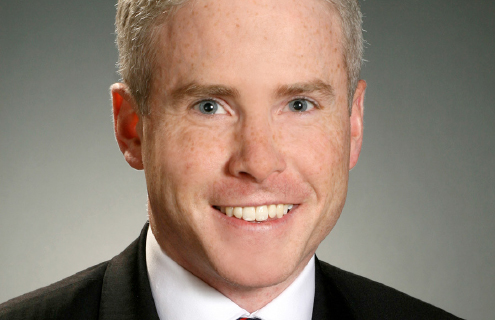State Street
Paul Fleming
08 September 2015
State Street’s new head of securities finance, Paul Fleming, talks about his new role and what’s on the horizon this year and beyond
 Image: Shutterstock
Image: Shutterstock
Can you tell us about your new position at State Street?
As head of securities finance, I’m responsible for the strategic direction and daily operation of the bank’s global agency and principal lending programmes. This is an exciting opportunity and I’m looking forward to building upon the division’s existing strengths to ensure we are poised to deliver to our clients the solutions they need to enhance the value of their portfolios.
I am fortunate to be taking over this role from Lou Maiuri, who has stepped forward to lead global exchange, State Street’s data, research and analytics division. While heading securities finance, Lou championed the division’s strategic planning efforts, helping pave the way for us to comprehensively address the challenges and seize any opportunities brought about by new and proposed financial industry regulation. He encouraged the global team’s entrepreneurial spirit and, with that and the depth of talent within the division, we are well positioned to continue those efforts.
As I am transitioning from the immediate oversight of enhanced custody, our principal lending group, Marty Tell is transitioning to manage the team. Marty has led enhanced custody’s global trading activities for the past two years, and he arrived at State Street with a wealth of senior leadership experience in various equity finance roles in the industry.
What are you focused on now?
In the near term I will be spending time with our clients to better understand some of their challenges and priorities. As a start, I’ve had the opportunity to meet with a number of our clients in the US in the past few weeks, and I’ll be visiting our offices and clients in both Asia and Europe, the Middle East and Africa. At the same time, I am also reviewing our progress against our top risk management, regulatory and business development initiatives.
Tell us more about the enhanced custody business that you’ve been running. How is it doing?
As brief background, our enhanced custody business provides financing and securities lending direct to end users, similar to conventional prime brokerage. However, we do the financing and securities lending within the context of a ring-fenced custodial account.
We’ve seen tremendous growth in our customer base over the past several years. In part that is because we are well-aligned with the bank’s initiatives with alternative investment managers. The overall growth in alternative assets under management, plus a combination of balance sheet and capital constraints for traditional financing providers, has created new opportunities for us to provide solutions to our clients.
What has changed on the agency side of the business since you worked there?
A lot has changed. The market environment is different, of course, with a greater focus by all participants on risk management since the financial crisis. Agent lenders and clients undertook structural changes to their programmes immediately to reduce risk, and regulators have continued to focus on risk management in the industry.
Many clients have elected to adopt minimum spread programmes and, where relevant, cash collateral investment guidelines are generally more conservative as well. Both changes lower total on-loan volumes, but retain the majority of the participants’ revenue opportunity. For clients that can do so, many have also looked to non-cash collateral alternatives and term opportunities. Broadly, clients are more knowledgeable than ever about our business and the industry, and that’s a great thing, as it facilitates really interesting discussions about how we can help them achieve their risk-return objectives in the context of some of the business challenges we face going forward.
What is the biggest challenge for securities lending programmes right now?
The impacts of regulatory change are far-reaching, but what lies ahead is becoming clearer as more details are finalised. Our securities financing business is different today than it was five years ago, and it will continue to evolve. We have a great deal of experience within our group, and I’m energised by the team’s enthusiasm and ideas about where our business will be in another five years, and beyond.
We know you’ve been looking at central counterparty development with Eurex Clearing. How is that going?
Yes, the industry is moving towards a greater use of central counterparties, given the capital efficiencies that central counterparties (CCPs) afford their participants. Our efforts with Eurex Clearing and discussions with other industry participants have been very productive to date. It will take some time to arrive at a solution that works for all, but we continue to work on this and other projects that we believe will deliver value to our clients.
What do you think will define the winners and losers in this business in the long-term?
I expect that successful firms will be those that work with both clients and counterparties to find mutually beneficial solutions that help borrowers address their balance sheet, regulatory capital and liquidity constraints and help clients address their risk/return expectations, given the changes to the marketplace.
← Previous interview
Northern Trust
Sunil Daswani
Next interview →
Brown Brothers Harriman
John Wallis and Rob Lees
 Image: Shutterstock
Image: Shutterstock 